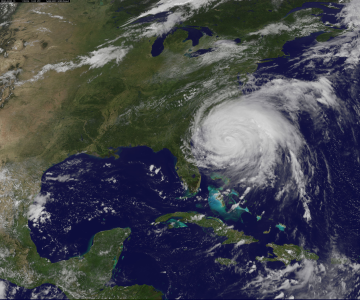710224_Stormquake_360 px width.png

Under certain conditions, a hurricane can create an earthquake, known as a stormquake. Credit: NASA Earth Observatory
As if hurricanes aren’t scary enough, they can generate something that sounds just as scary: stormquakes. As a hurricane rumbles across the ocean surface, it can cause the ocean floor to rumble as well. Fortunately, the quakes don’t cause any damage.
Scientists discovered stormquakes by studying seismic activity recorded during many hurricanes. The records revealed that sometimes, the ocean floor “jiggled” as a hurricane passed overhead. The jiggles could be as strong as a magnitude 3.5 earthquake. Some continued for days, and were felt up to thousands of miles away.
A stormquake rumbles to life as a hurricane churns up big waves on the ocean surface. That creates big waves below the surface. They can ripple all the way to the bottom. And that can create waves in the ground. But it takes the right ocean contours to make the bottom rumble. The stormquakes found so far all took place in regions with a shallow continental shelf with a gentle slope. The ground was fairly flat and smooth.
So most of the stormquakes identified so far have been limited to a few areas. They’re common off the coast of New England and the Atlantic provinces of Canada, in areas like the Georges Bank and the Grand Banks. They’ve also been recorded off the coast of Florida.
The seismic waves created by stormquakes aren’t a threat to life and limb. But they can help scientists probe conditions below the ocean floor—the rumble of hurricanes pushing deep into the solid Earth.

